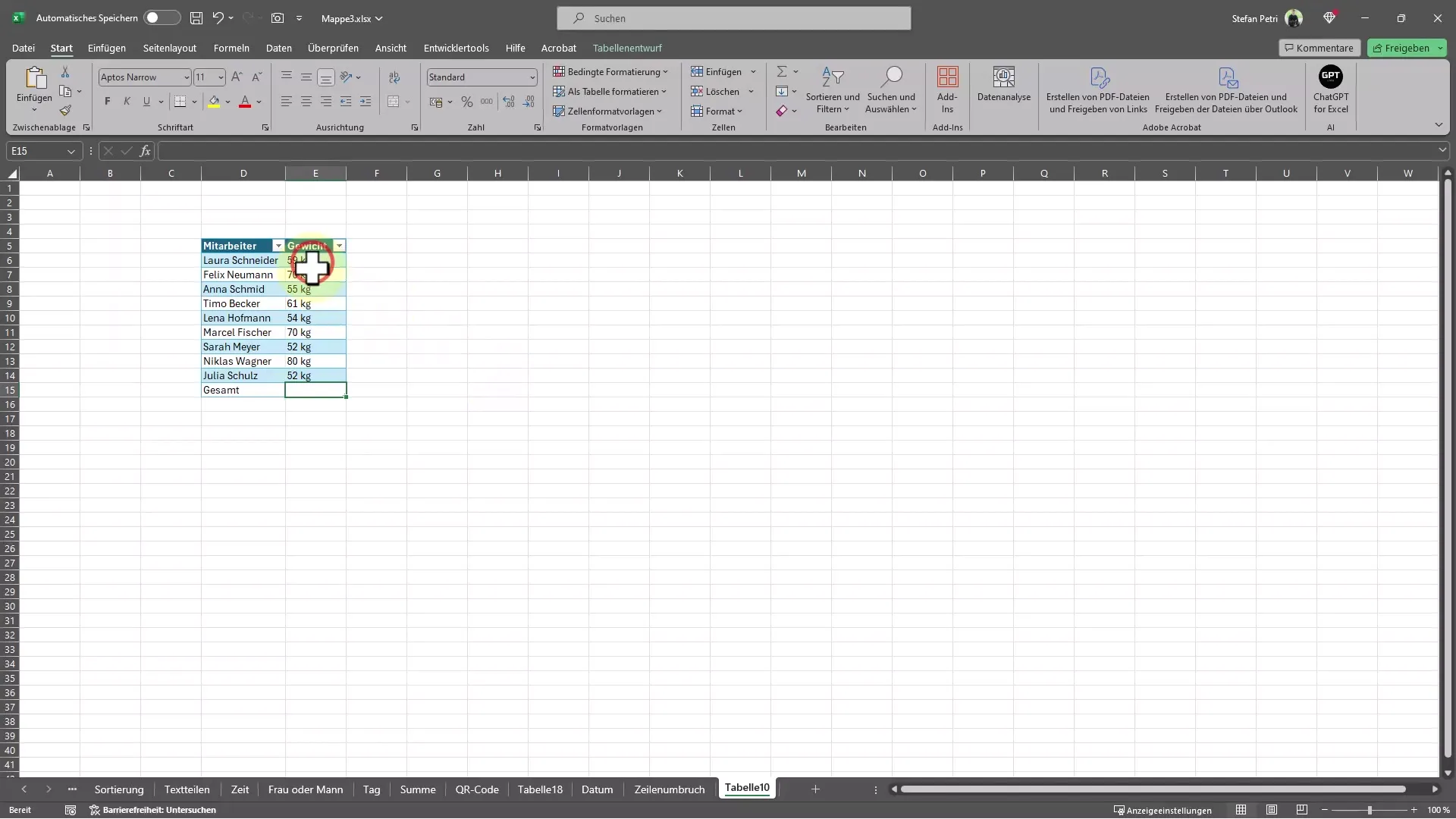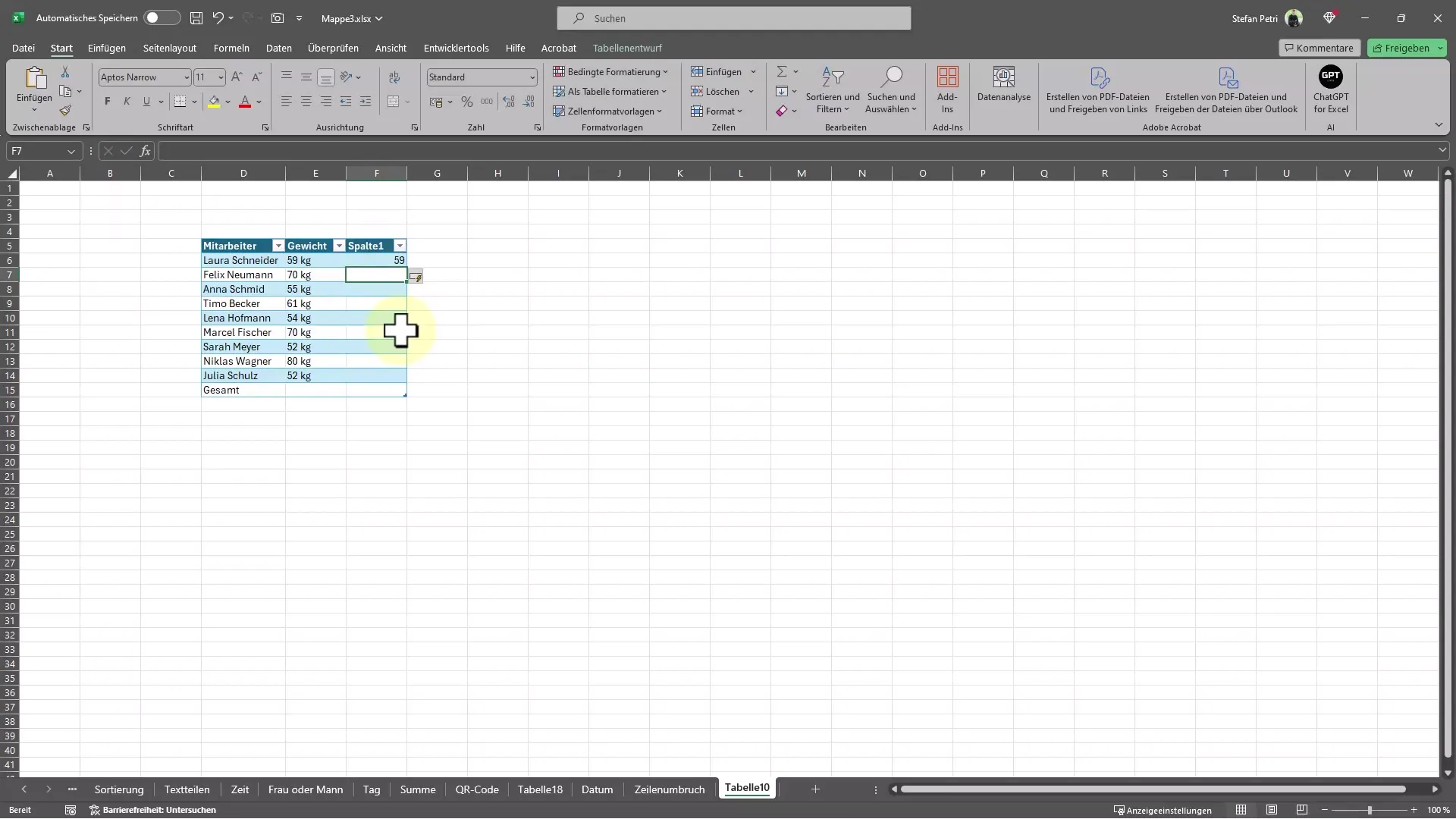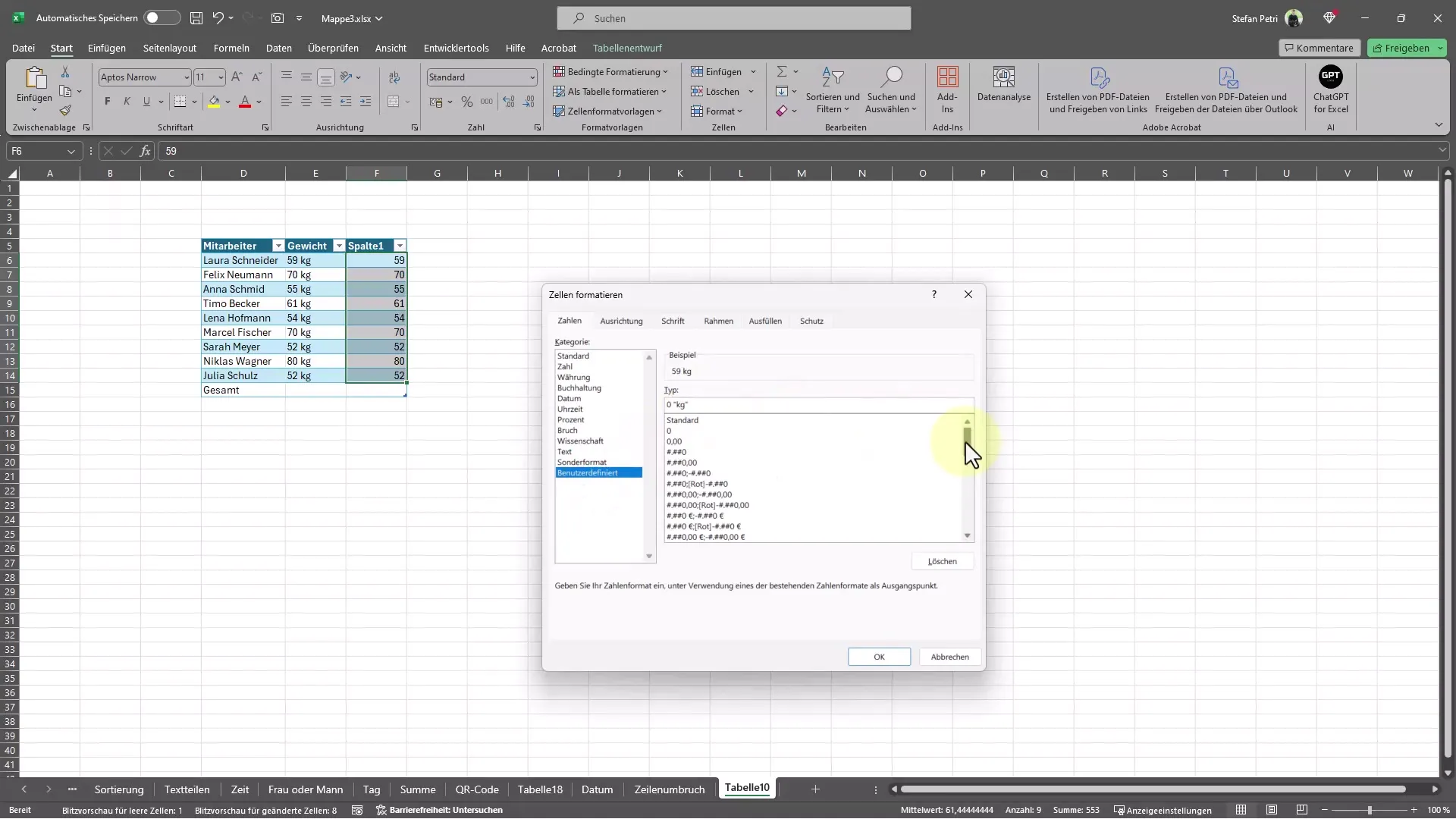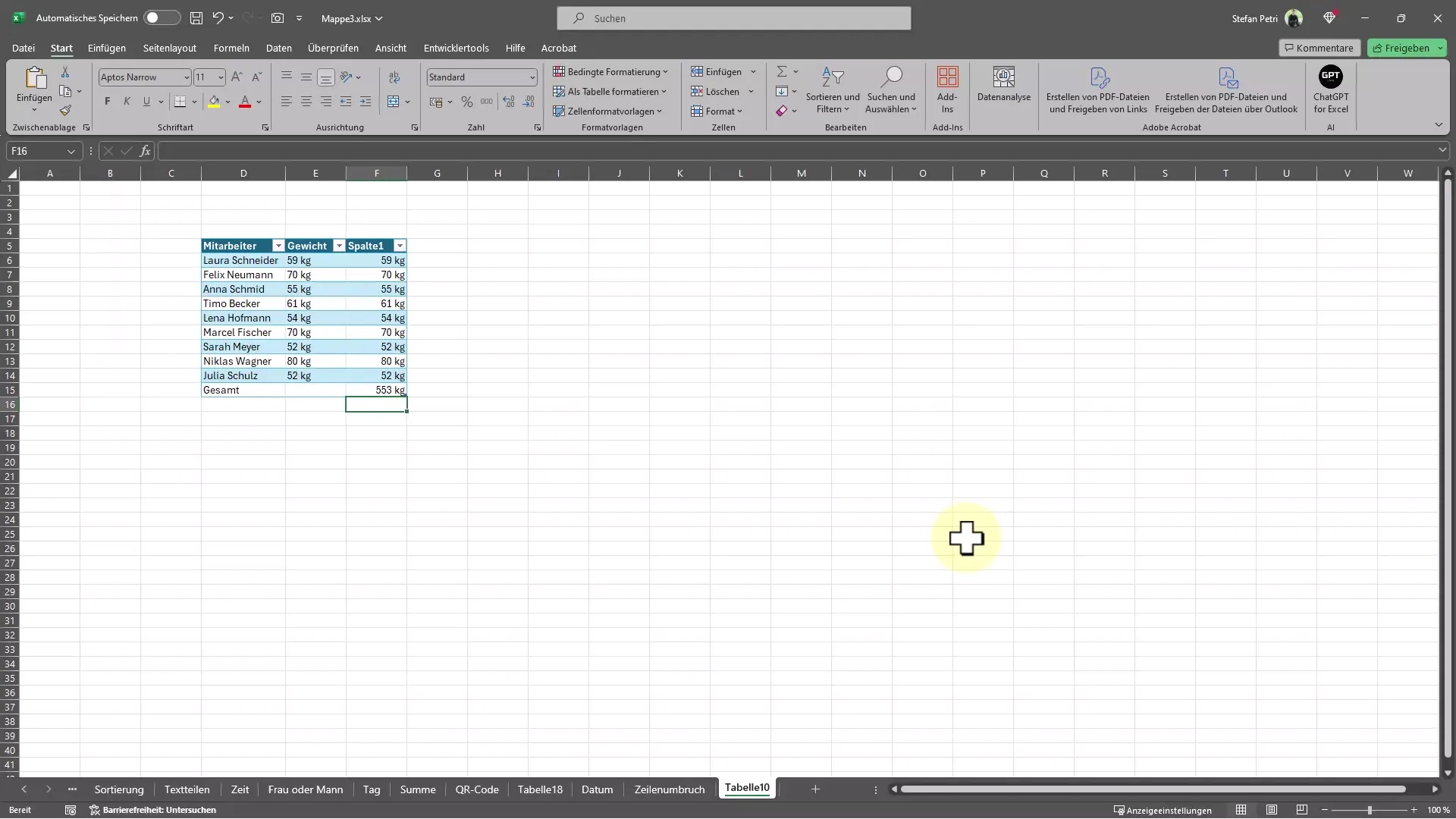In this tutorial, you will learn how to sum values with a unit of measurement in Excel – especially when this unit of measurement is not directly recognized as a number. Often in tables, not only the value is entered but also a unit of measurement, such as "kilograms" (kg). This can cause Excel to have difficulty correctly summing these values. We will show you a simple method to work around this problem and still add up the values correctly.
Main Takeaways
Simple summation of values in Excel can become complicated when combining numbers with units of measurement. However, through conversions and proper formatting, you can efficiently work with such data.
Step-by-Step Guide
Let's start by preparing the data. Make sure the values you want to sum are entered in a separate column. For example, if you have a table where the number of kilograms is in one column.

If you want to use Excel's SUM function, you may encounter a problem. For instance, if the values are stored as text or the unit of measurement is directly next to the value, Excel may not recognize that number as such, and the SUM function will return a result of zero.
To solve this issue, you can manually re-enter the values or, even easier, use the "Ctrl + E" function to automatically fill the cells. With this keyboard shortcut, you can quickly add the values without having to type them out completely.

Once the values are correctly entered, you can specify that Excel should display the term "kilograms" next to the numbers. Right-click on the cell with the values and select "Format Cells."
In the window that appears, choose "Custom" from the list on the left side. Here, you can adjust the format code. For example, enter "0" for the numbers and "kilograms" in quotation marks ("kg") to create the desired format.

Now you can calculate the sum. If you enter "equals SUM" in a cell, Excel will add up the values while taking the unit of measurement into account.
The result is a correct summation of values, displayed as kilograms. You should now be able to easily sum and display values with units of measurement, making your data both accurate and organized.

Summary
In this guide, you have learned how to correctly sum values with a unit of measurement in Excel. By using custom formatting and the auto-fill function, you can overcome issues with Excel recognizing numbers.
Frequently Asked Questions
How can I ensure that Excel recognizes my values as numbers?Inserting values without units of measurement (e.g., only the numbers) or reformatting cells can help.
Can I use units of measurement other than kilograms?Yes, you can use any unit of measurement by entering the appropriate text into the custom format.
What should I do if a value is not being added?Check if the value is formatted as text and convert it to a number if necessary.


